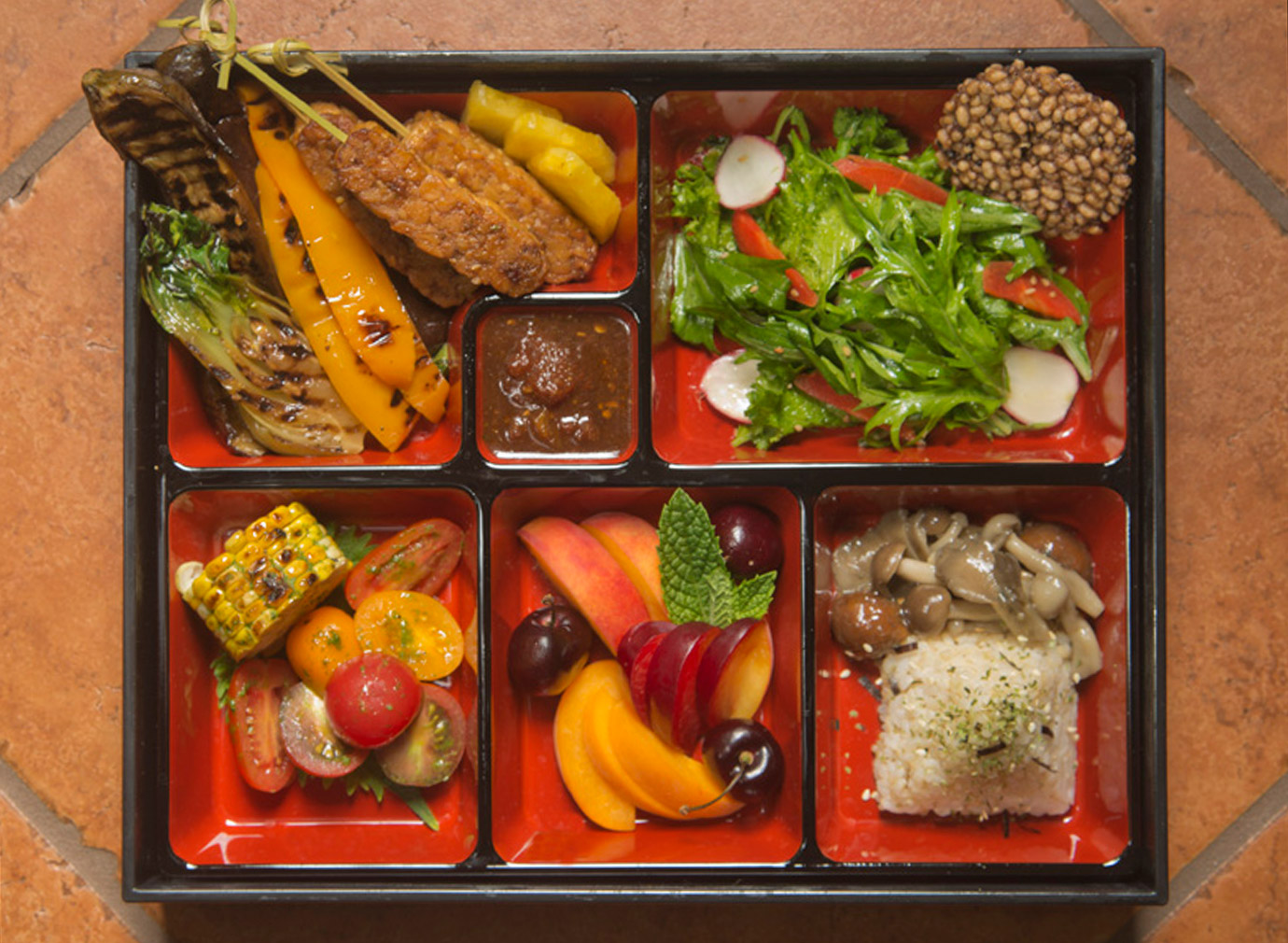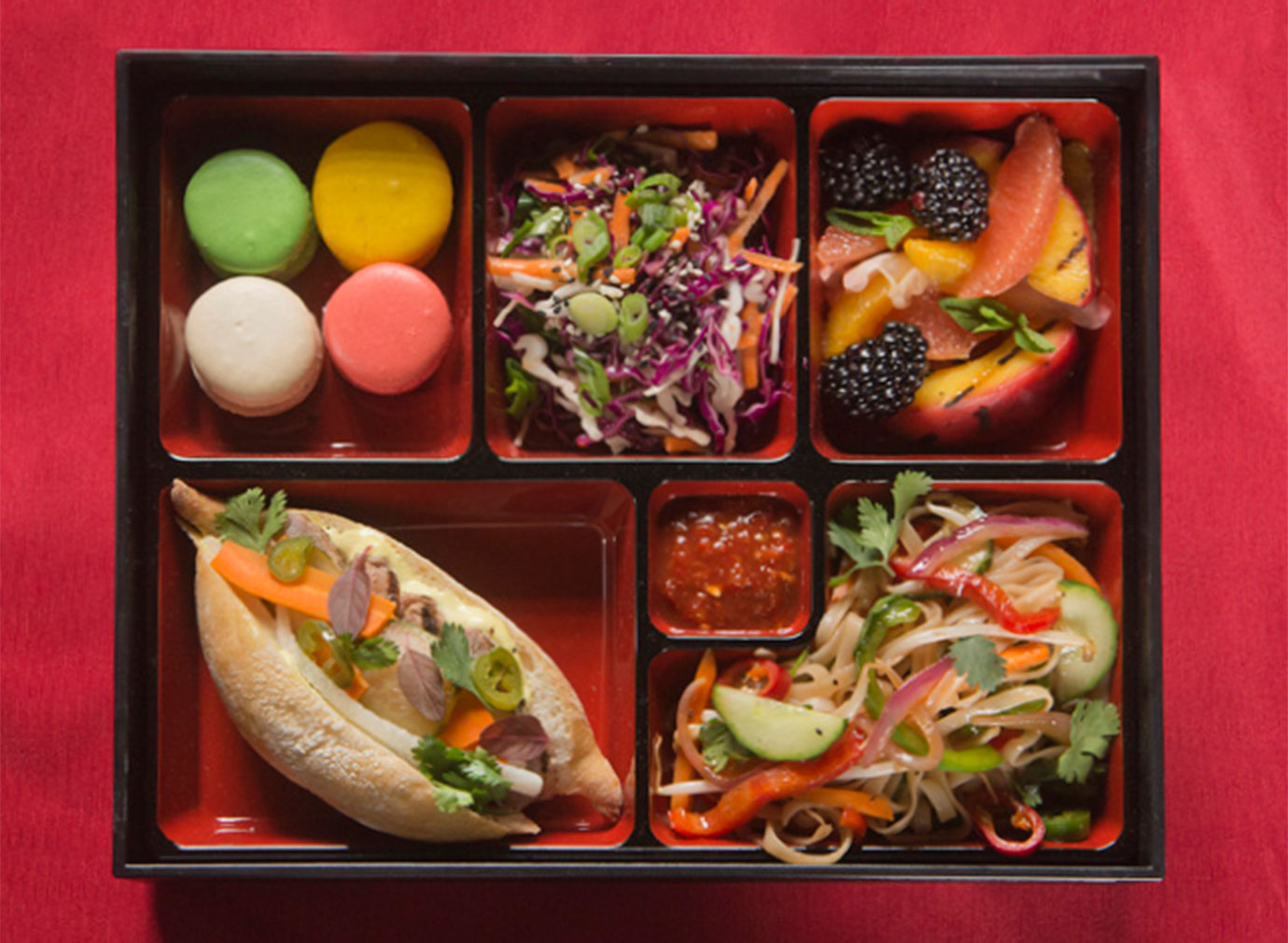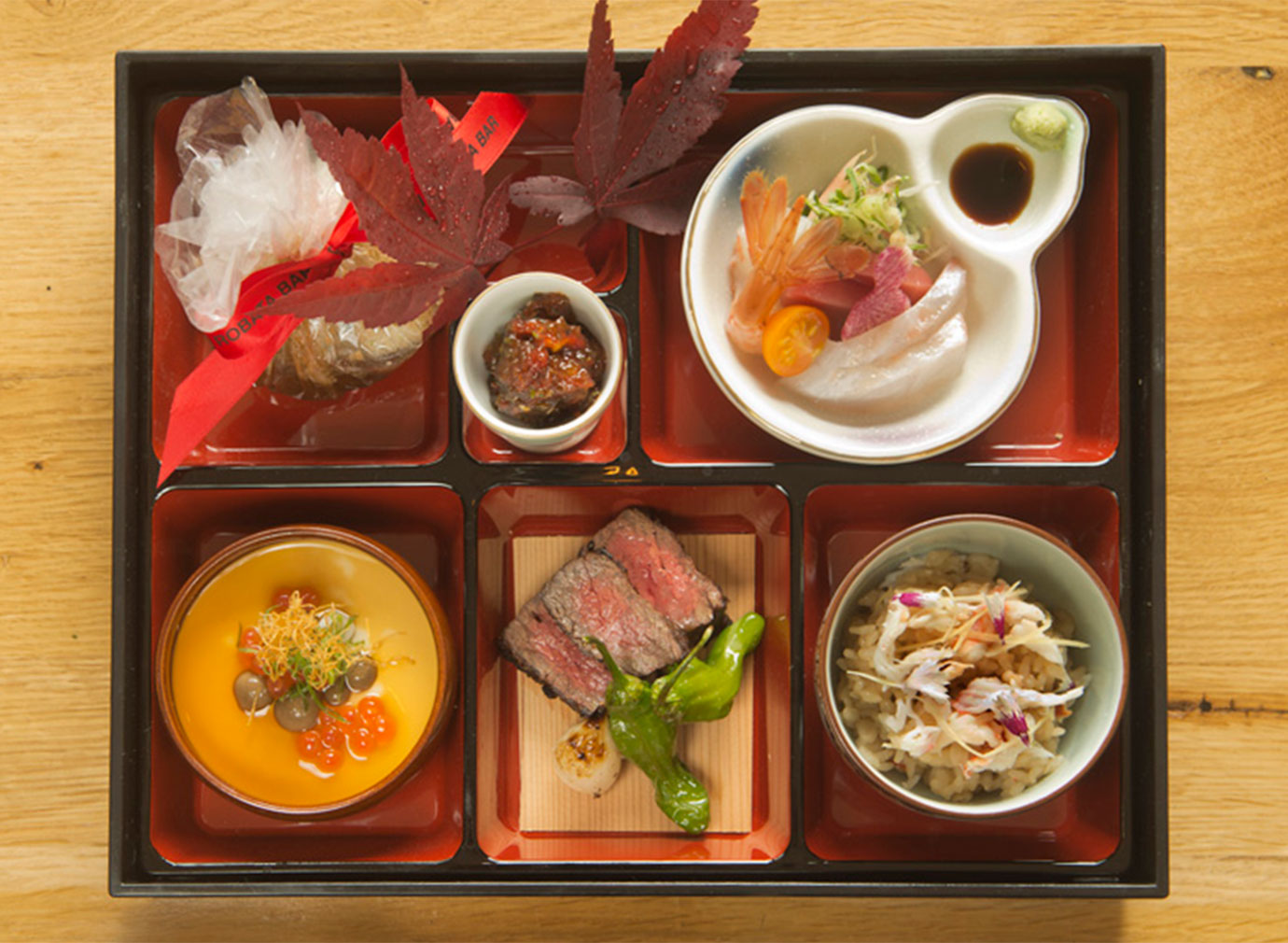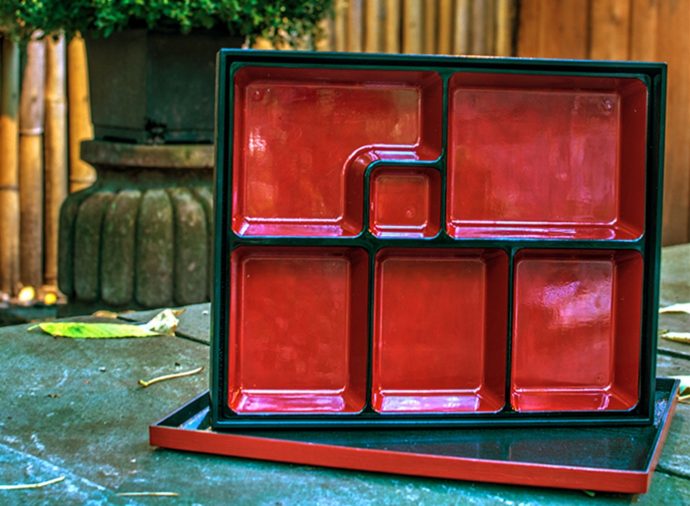It’s 1980. I am at a famous restaurant in Kyoto. I’ve finished working in Tokyo and I’m traveling alone, eager to explore more of Japan. I want to experience kaiseki, or Japanese formal dining served in traditional restaurants like Kitcho. It’s lunchtime, a more comfortable hour to be solo in this elegant setting. I choose the counter, the best vantage point to observe the hands of the chef. The wooden surface has a beautiful grain and feels like satin under my fingertips. A smooth river stone with a gentle indentation serves as the chopstick rest. I am presented with a simple black lacquer box. There is rush of pleasure when I lift the lid and spend a moment regarding the various elements inside. Each of the five sections holds a miniature course; precisely arranged and exquisitely garnished.
This is my first introduction to the Japanese bento box. It is an experience that satisfies an aesthetic hunger as well as a sensual one. As in much of Japanese cuisine, a creative tension exits between the strict structure of the box’s form and the individual chef’s artistry and culinary skill. There are five compartments in the traditional Shokado-style bento. The chef has the choice of many ingredients and styles of presentation to fill this container, but he or she must work within the boundaries of the season and the construct of the box itself.
Thirty-five years later, I am still fascinated with bento. I wonder how the structure of the container impacts taste and flavor. I want to continue to explore the same format filled with different types of cuisine. For the summer edition of the Cook’s Gazette, I gave three talented chefs the same black lacquer box and asked them to create a summer meal.
Explore the contents of the box by hovering your cursor over each compartment. Click on the box to read the chefs’ profiles and some more of their ideas about bento boxes.
Jeanne Valenta

Chef Kevin Kelly

Chef Gene Kato


